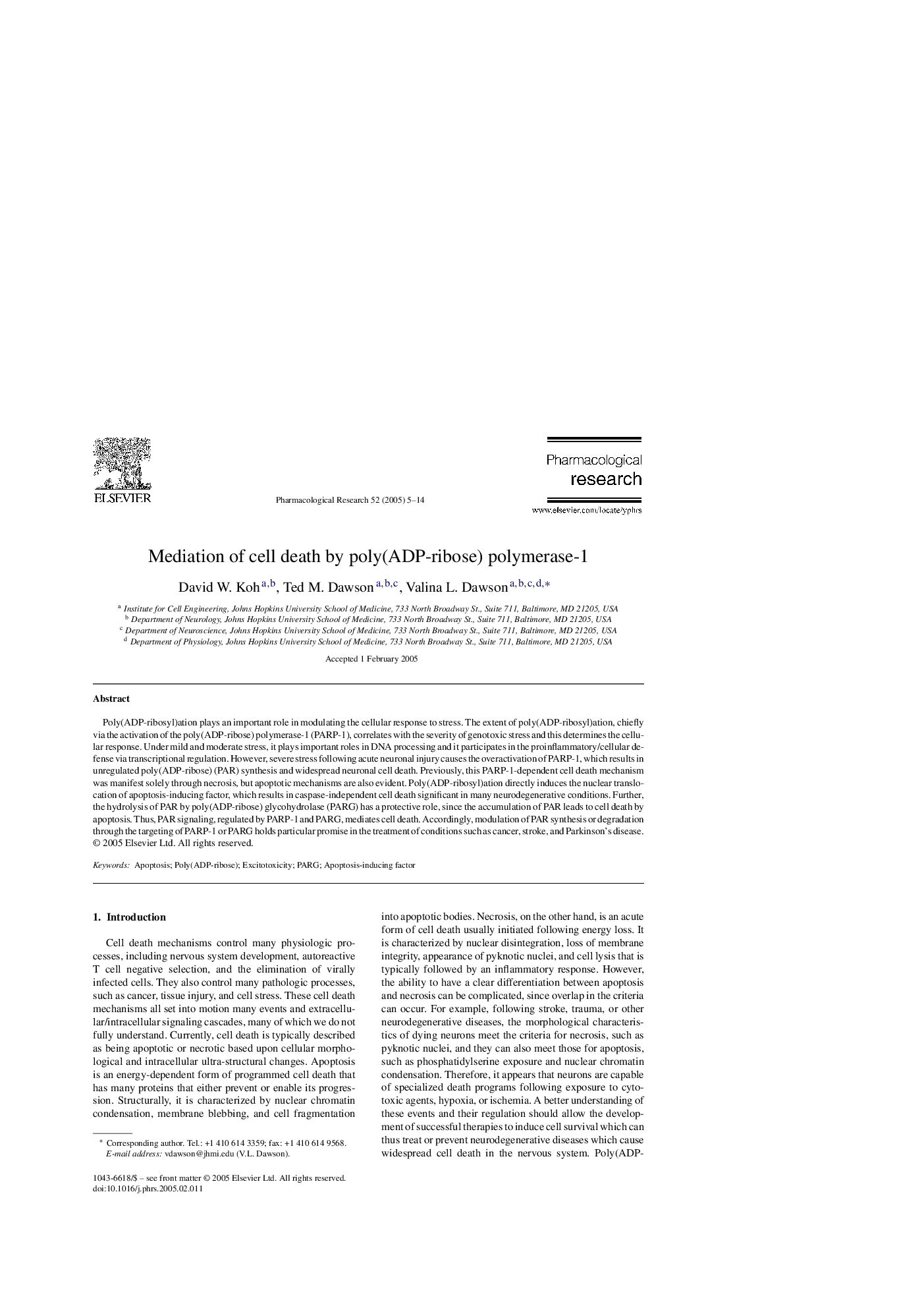| Article ID | Journal | Published Year | Pages | File Type |
|---|---|---|---|---|
| 9015217 | Pharmacological Research | 2005 | 10 Pages |
Abstract
Poly(ADP-ribosyl)ation plays an important role in modulating the cellular response to stress. The extent of poly(ADP-ribosyl)ation, chiefly via the activation of the poly(ADP-ribose) polymerase-1 (PARP-1), correlates with the severity of genotoxic stress and this determines the cellular response. Under mild and moderate stress, it plays important roles in DNA processing and it participates in the proinflammatory/cellular defense via transcriptional regulation. However, severe stress following acute neuronal injury causes the overactivation of PARP-1, which results in unregulated poly(ADP-ribose) (PAR) synthesis and widespread neuronal cell death. Previously, this PARP-1-dependent cell death mechanism was manifest solely through necrosis, but apoptotic mechanisms are also evident. Poly(ADP-ribosyl)ation directly induces the nuclear translocation of apoptosis-inducing factor, which results in caspase-independent cell death significant in many neurodegenerative conditions. Further, the hydrolysis of PAR by poly(ADP-ribose) glycohydrolase (PARG) has a protective role, since the accumulation of PAR leads to cell death by apoptosis. Thus, PAR signaling, regulated by PARP-1 and PARG, mediates cell death. Accordingly, modulation of PAR synthesis or degradation through the targeting of PARP-1 or PARG holds particular promise in the treatment of conditions such as cancer, stroke, and Parkinson's disease.
Related Topics
Health Sciences
Pharmacology, Toxicology and Pharmaceutical Science
Pharmacology
Authors
David W. Koh, Ted M. Dawson, Valina L. Dawson,
